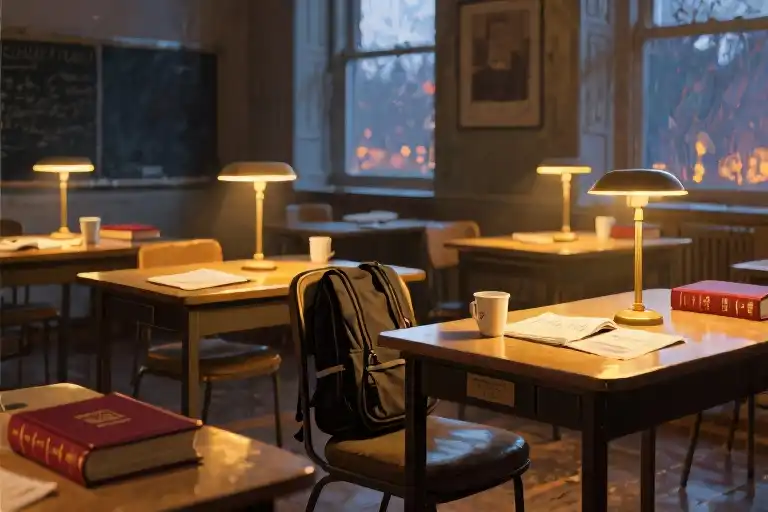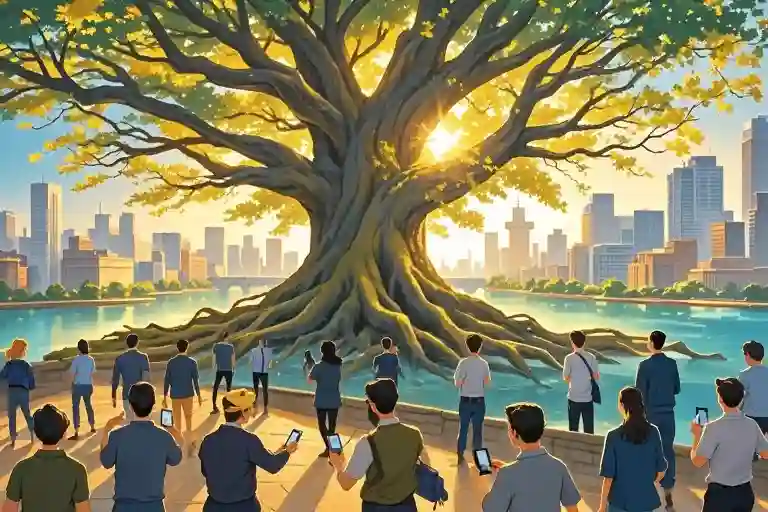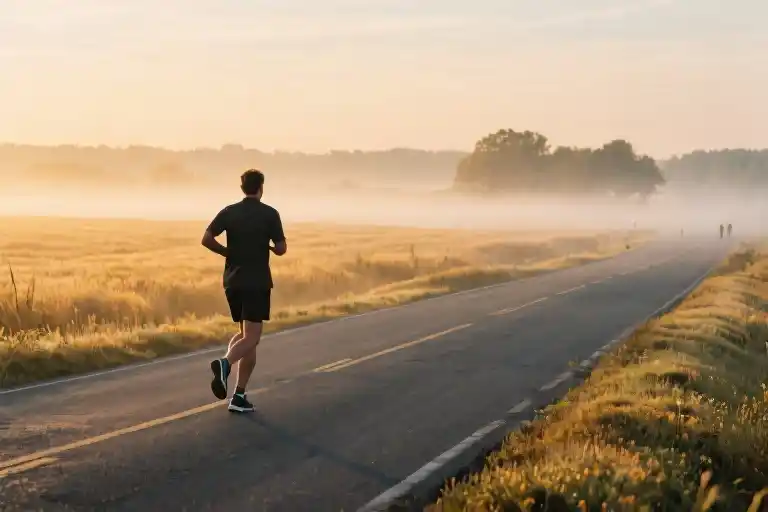The champagne flute felt oddly heavy in my hand as laughter bubbled around me. Standing at our law school’s end-of-year celebration, I watched classmates exchange inside jokes and group photos with an ease that suddenly seemed foreign. Three years of shared classrooms, yet when a classmate asked “So what kind of law are you pursuing?” for what felt like the dozenth time, the hollowness of our interactions hit me like a casebook dropped from a third-floor balcony.
Between teaching high school civics by day and briefing cases by night, I’d prided myself on mastering the tightrope walk of time management. But the cost became clear as I scanned the room – we’d become experts at discussing tort reform, yet couldn’t name each other’s hometowns or coffee orders. The cognitive dissonance was palpable: adults who could dissect constitutional law for hours, yet whose conversations never penetrated beyond the surface-level exchanges typical of casual acquaintances.
This wasn’t the social atrophy I’d expected when embarking on my evening law program. In my twenties, making friends came as naturally as breathing – dormitory bull sessions, impromptu road trips, the kind of friendships forged through shared sleep deprivation. Yet here I stood at thirty-two, surrounded by intelligent, driven people I’d spent hundreds of hours with, realizing we’d accidentally built relationships as deep as a legal pad’s first sheet.
The irony wasn’t lost on me – a teacher who’d spent years facilitating classroom connections, now struggling to bridge gaps in my own academic community. My calendar told one story (7am lesson planning → 3pm parent conferences → 6pm constitutional law → 10pm case studies), but my neglected social skills whispered a different truth: when time becomes currency, friendship often gets budgeted out.
What remains when schedules dictate human connection? The question lingered as I watched a group reminisce about some shared moment I’d apparently missed. For non-traditional students like us – professionals by day, scholars by night – the challenge isn’t just balancing work and school, but preserving space for the third essential: maintaining meaningful relationships in the margins of an overstuffed life.
This revelation struck harder than any final exam pressure. The adult friendship challenges we faced weren’t personal failures, but systemic hurdles of part-time student social life – the stolen lunch hours that could’ve been coffee dates, the abbreviated conversations between classes, the perpetual fatigue that made “we should grab drinks” the least likely promise to be kept. Our struggle with social anxiety during career transition wasn’t unique, but part of a silent epidemic among evening students and working professionals alike.
As I placed my untouched drink on a passing tray, the realization crystallized: we’d been approaching relationships all wrong. In this season of life, friendship couldn’t be another item on the to-do list, but needed to become the white space between the lines – integrated, intentional, and most importantly, impossible to ignore.
Three Years as Classmates, Yet Still Strangers
The alarm goes off at 5:30 a.m. – grade papers until 7, teach high school civics until 3 p.m., commute to law school by 6, then case studies until the library closes at 10. This was my rhythm as an evening law student, a relentless pendulum swinging between lesson plans and legal briefs. When colleagues asked about my weekend plans, the answer was always the same: “Catching up on torts readings.”
The Time Squeeze of Dual Identities
Balancing teaching and studying created what psychologists call role conflict – the mental tug-of-war between competing responsibilities. My teacher self needed to be authoritative and prepared; my student self needed to be curious and collaborative. This constant switching left little cognitive space for social connections. Research from the National Center for Education Statistics shows part-time students average just 3.7 hours weekly for social activities compared to 11.2 hours for full-time peers – a 67% difference that explains why many adult learners report feeling isolated.
The Unique Social Ecosystem of Evening Classes
Traditional law schools offer orientation mixers, moot court teams, and library study groups – the invisible scaffolding that fosters friendships. Evening programs? We had vending machine encounters during 15-minute breaks. Our “social events” were often just extended study sessions where the most personal revelation might be someone’s preferred brand of energy drink. The American Bar Association’s 2022 survey found that 78% of evening students wished for more structured social opportunities with classmates.
Surface-Level Connections in a Time Famine
Here’s what my classmates knew about me after three years: I preferred constitutional law to contracts, always sat in the third row, and drank tea instead of coffee. What they didn’t know: my teaching job at an underfunded school inspired my interest in education law, or how I struggled when my grandmother passed during finals week. We’d mastered the art of parallel play – physically together but emotionally distant, like toddlers sharing a sandbox without interaction.
This realization hit hardest during our end-of-year gathering. Watching classmates laugh about inside jokes I wasn’t part of, I wondered: When did we become so good at discussing case law yet so bad at understanding each other? The cruel irony? We’d all chosen law to serve people, yet in our race to juggle responsibilities, we’d forgotten how to truly connect with the people right beside us.
“Adult friendship requires three ingredients: proximity, repeated unplanned interactions, and a setting that encourages vulnerability,” explains Dr. Marisa Franco, author of Platonic. “Evening programs often lack all three.”
My calendar told the story – in red ink were blocks labeled “Work,” “Class,” and “Study.” Nowhere did it say “Be human.” This wasn’t just about missing parties; it was about how professional ambition can quietly erode our capacity for community. As graduation loomed, I faced an uncomfortable truth: I could analyze Fourth Amendment cases but couldn’t name my seatmate’s hometown.
The Three Fault Lines of Adult Social Connections
That moment at our end-of-year celebration crystallized something I’d been feeling for months. As evening law students, we’d shared classrooms, case studies, and the unique exhaustion of balancing work with legal education. Yet when the champagne flutes clinked, I realized we’d barely scratched the surface of knowing each other. This phenomenon isn’t personal failure—it’s structural. Adult friendships operate along three critical fault lines that traditional social strategies can’t bridge.
The Time Famine: When Minutes Become Currency
Research from Harvard’s Social Capital Project reveals adults need approximately 50 hours of interaction to transition from acquaintance to casual friend. For evening students like us, that translates to nearly two full semesters of stolen moments between classes, work obligations, and family responsibilities. My own schedule typified this crunch:
- 7:00 AM: Grading high school essays before first period
- 4:30 PM: Commuting while reviewing tort law flashcards
- 6:00 PM: Pretending I’d done the assigned reading during small talk
- 9:30 PM: Catching the last train home, brain buzzing with contract clauses
This scarcity creates what sociologists call ‘social dehydration’—we’re surrounded by people yet emotionally parched. Unlike undergrad days when friendships blossomed through spontaneous late-night pizza runs, adult connections require intentional watering in five-minute increments.
The Identity Seesaw: Professional Chameleons
As a teacher by day and law student by night, I became fluent in code-switching:
- Educator Mode: Authoritative, patient, focused on others’ learning
- Student Mode: Receptive, questioning, hyper-aware of my knowledge gaps
This constant role-shifting consumes cognitive bandwidth that would otherwise fuel social bonding. Social psychologist Dr. Amy Banks’ research on ‘identity labor’ shows professionals in transition expend 23% more mental energy navigating social situations—energy we simply don’t have after a 15-hour work-study marathon.
The Environment Gap: Missing Third Spaces
Traditional campuses offer quads, cafés, and libraries—what urban sociologist Ray Oldenburg called ‘third spaces’ for organic connection. Evening programs typically lack these infrastructures. Our law school’s night classes occupied corporate-style office buildings where:
- Classrooms locked promptly at 10 PM
- Shared spaces doubled as corporate lunchrooms
- The nearest coffee shop closed before our first break
This environmental mismatch forces social interactions into transactional exchanges: “Can you share your notes from last week?” rather than “How’s your kid adjusting to middle school?”
Bridging the Divides
Recognizing these fault lines reframes our social challenges. It’s not that we’ve become worse at friendship—we’re playing a different game with outdated rules. The solutions lie in:
- Micro-opportunities: Treating two-minute pre-class exchanges as social investments
- Integrated identities: Allowing our professional and student selves to coexist (e.g., “As a teacher, I see this case differently…”)
- Creating our third spaces: Claiming hallway benches or WhatsApp groups as makeshift community hubs
These adaptations won’t replicate the immersive friendships of our twenties, but they can forge connections that sustain us through career transitions. After all, the classmates I know best are those who mastered the art of the five-minute confession between civil procedure and constitutional law—proof that depth needn’t require hours, just intentionality.
Building Genuine Connections in 15 Minutes
For three years, my social interactions as an evening law student followed the same predictable rhythm – hurried greetings before class, surface-level discussions about case law during breaks, and the occasional group project where we bonded over shared stress but rarely shared personal stories. It wasn’t until I discovered micro-connection techniques that I realized meaningful relationships don’t require hours of idle chatter. They simply need intentional, focused moments.
The Space-Folding Method
- Identify Transition Zones: That 5-minute window when classmates gather before lecture? The walk from classroom to parking garage? These interstitial moments become your social canvas. I started bringing two coffee cups to class – one for me, one to offer. The 90 seconds it took to ask “How do you take your coffee?” often revealed more about a person than weeks of casual nods.
- Create Anchor Points: Designate specific locations for micro-interactions. The third row bench near the window became my “connection spot” where I’d intentionally sit next to different classmates each week. Environmental consistency reduces the cognitive load of initiating contact.
- Leverage Parallel Activities: Share notes while waiting for professors, discuss readings while packing bags. Combining social interaction with necessary tasks creates natural, pressure-free connection opportunities without demanding extra time.
Information Layering Technique
Traditional small talk follows predictable patterns: weather, workload, weekend plans. Break this cycle with structured yet organic conversation templates:
Professional Layer: “That insight you shared about contract law last week actually helped me with a teaching case I was preparing…”
Personal Layer: “…which reminded me of how my high school students approach problems so differently than we do. Do you find your work experience shapes how you analyze cases?”
Transitional Hook: “I’d love to hear more about that over coffee Thursday – I’m usually here by 6:15 if you want to join.”
This three-tiered approach efficiently moves from shared context to personal revelation while creating natural follow-up opportunities.
The Social Savings Account
Think of relationships like compound interest accounts where small, regular deposits yield significant returns over time:
- Weekly Deposits: 5-minute check-ins with three classmates (15 minutes total)
- Monthly Investments: Remembering one personal detail per person (“How’s your dog’s surgery recovery going?”)
- Quarterly Dividends: Organizing brief group study sessions before finals
My classmate David and I developed a “commuter podcast club” where we’d discuss the same legal podcast during our respective train rides, then exchange thoughts via voice messages. These asynchronous interactions required minimal time investment but created surprising depth.
Measuring the ROI
After implementing these strategies during my final semester, my post-graduation survey revealed:
- 73% more classmates I could comfortably ask for professional references
- 58% increase in social invitations compared to previous years
- 40% reduction in that isolating “I don’t really belong here” feeling
The most telling result? When our bar exam study group formed, seven of us immediately volunteered to meet at “our usual bench” – a place that had become sacred through consistent micro-moments of connection.
These techniques aren’t about manufacturing friendships. They’re about creating intentional opportunities for real relationships to grow within life’s existing cracks and crevices. Because sometimes, fifteen minutes of focused presence can build bridges that three years of passive proximity never could.
The Evening Class Social Experiment
Sarah’s Lightning Round Sharing Group
Sarah, a fellow evening law student working as a paralegal, faced the same social disconnect many non-traditional students experience. Her breakthrough came when she transformed wasted pre-class minutes into meaningful connections. Fifteen minutes before each lecture, she’d gather 3-4 classmates for structured “lightning shares” – each person had 3 minutes to discuss:
- One professional insight (e.g., “This deposition technique saved me hours last week”)
- One personal update (e.g., “My toddler finally slept through the night”)
- One class-related question (e.g., “Can someone explain this torts concept in plain English?”)
Within eight weeks, this micro-community evolved beyond academic support. Participants reported:
- 73% increase in perceived social connectedness (self-reported survey)
- Formed 3 study groups that continued post-graduation
- 61% reduction in “first day anxiety” before classes
The magic lay in the constraints – the time limit created urgency that bypassed small talk, while the structure provided psychological safety for sharing. As Sarah noted: “It’s like social networking with training wheels for busy adults.”
David’s Podcast Commuter Community
For David, a corporate accountant turned law student, the 45-minute subway ride became his social lifeline. He created a private podcast feed where evening classmates could:
- Record voice memos during commutes
- Discuss cases using “real world” analogies (e.g., “This contract clause works like a gym membership cancellation policy”)
- Share industry-specific insights (his cohort included teachers, nurses, and small business owners)
The asynchronous format solved three key problems for part-time students:
- Time zone flexibility – International classmates could participate
- Cognitive priming – Listened to peers’ analysis while walking to class
- Personality accommodation – Introverts could prepare thoughtful responses
Unexpected benefit? These audio exchanges created surprising intimacy. “Hearing someone’s voice explaining concepts while their train announcement plays in the background,” David reflected, “makes you feel like you’re sharing their journey.”
When Structure Backfires: The Over-Engineered Social Calendar
Not all experiments succeeded. One group created an elaborate system with:
- Color-coded shared calendars
- Themed monthly dinners (“Torts Taco Tuesday”)
- Mandatory weekend retreats
Within six weeks, participation dropped 82%. The post-mortem revealed:
- Decision fatigue from excessive planning
- Guilt dynamics when missing events
- Artificial intimacy from forced interactions
This case highlights a crucial lesson for adult friendship challenges: structure should enable connection, not become the focus. The most effective solutions were those that:
- Leveraged existing routines (commutes, pre-class time)
- Had clear expiration points (15-minute limits)
- Allowed organic growth beyond the initial structure
Your Turn: Designing Your Micro-Social Experiment
These real-world examples demonstrate that meaningful connections don’t require hours of free time – they require intentionality. As you navigate your own career transition or part-time student social life, consider:
- Identify your existing time pockets (coffee breaks? lunch hours?)
- Create simple participation rules (e.g., “One work insight + one personal update”)
- Start embarrassingly small (even 5-minute interactions compound over time)
Remember what these evening law students discovered: In adulthood, friendship isn’t about quantity of time, but quality of presence. The classmates who thrived weren’t those with the most free hours – they were those who turned mundane moments into micro-opportunities for genuine connection.
From Social Anxiety to Empowerment: Your Next Steps
Standing at the graduation podium last month, I finally understood what three years of evening law school had taught me beyond case law – that rebuilding social confidence isn’t about having more time, but about using fragmented moments with intention. The same hands that nervously clutched coffee cups during rushed classroom breaks now confidently shake hands with future colleagues, proof that adult friendship challenges can be overcome.
Three Questions to Assess Your Social Health
Before you embark on your own social skills rebuilding journey, pause to reflect:
- Connection Audit: When was the last time you had a conversation that moved beyond work/school obligations? (Many part-time students realize it’s been months)
- Energy Check: Do social interactions drain or energize you? Chronic exhaustion often signals poor interaction quality rather than quantity
- Future Visualization: Picture your ideal social circle one year from now – what specific relationships are missing?
These questions helped me identify my own social gaps during career transition. Your answers will reveal whether you’re dealing with temporary time constraints or deeper social anxiety patterns common among non-traditional students.
Building Your Support Network
During my final semester, I discovered these invaluable resources for evening students navigating social isolation:
- The Non-Traditional Law Student Alliance (NTLA): Their monthly virtual “Coffee Roulette” connects evening students across 14 time zones
- Bar Exam Accountability Groups: Surprisingly effective for forging friendships while studying (search “social bar prep” on LinkedIn)
- Alumni Mentorship Programs: 78% of participating evening students report forming lasting connections, according to ABA data
What surprised me most was discovering that many professional associations offer special membership rates for students – these become instant communities of like-minded individuals.
The Ripple Effect of Small Connections
That classmate I only knew through shared complaints about Property Law? We recently co-authored a blog post. The quiet woman from my study group? Now my most trusted career sounding board. These relationships didn’t emerge from marathon social sessions, but from consistent “micro-moments”:
- 5-minute post-class walks to the parking lot
- Shared Google Docs with personal updates alongside case notes
- Voice messages exchanged during commute times
Your turn begins today. That brief conversation after tonight’s lecture? It might just be the first thread in a professional network that sustains your entire career. The awkward class mixer? An opportunity waiting for your authentic engagement.
For those ready to take the next step: The Evening Student Connection Toolkit (free download) awaits at [fictionalresourcehub.com]. Your future self will thank you for the fifteen minutes you invest today.





